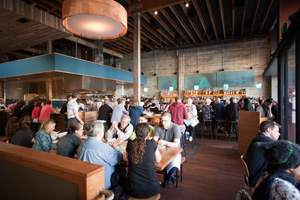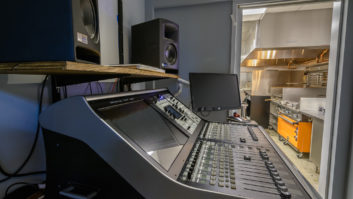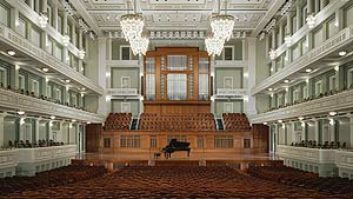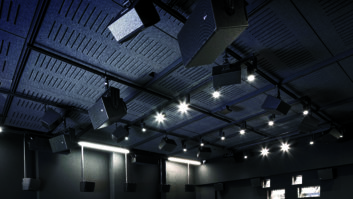
Since its introduction in late 2006, Meyer Sound’s Constellation system has found a home in high-end performing arts centers, houses of worship, theaters, artist rehearsal rooms, museums, and just about any space that might take advantage of variable acoustic response. This month there will be a lot of focus on a recent installation at Jazz at Lincoln Center in midtown Manhattan. But a little more than a year ago, the company generated some buzz around a rather unique install three time zones away, in downtown Berkeley, Calif., at a Oaxacan-themed restaurant named Comal.
The noise levels in restaurants nationwide have become a focal point for critics and diners alike. Comal owner John Paluska, who managed Phish for 17 years before switching careers, knew this and sought out a solution that allowed for intimate conversation while retaining the energy and buzz at the core of the after-work bar and foodie experience. He wanted a festive environment, he says, while not being overbearing. And he wanted to be able to change the acoustic energy by zones so that if the bar is hopping, he can bring down the noise level, or if the restaurant is full but relatively dead sounding, he can bring up the music without stifling the conversation. It works.
To start, Meyer’s team established a baseline acoustic signature in the open, airy, exposed-beam, 3,000-square-foot environment by putting up the company’s first Libra acoustic panels on the walls, featuring artwork by renowned photographer Deborah O’Grady. Next came Constellation, in this case featuring: 38 UPJunior VariO and 45 MM-4XP loudspeakers, 12 MM-10 miniature subwoofers, and 28 microphones distributed around the restaurant. Digital processing is hosted by the Meyer Sound D-Mitri digital audio platform. The bar and restaurant area is divided into three zones, with presets (managed by an iPad) to control the ambient characteristics of each space. The system was installed by BugID.
“I use the analogy of a portrait photo taken with shallow depth of field,” explains Paluska. “Up close, the image is sharply detailed, while behind it there is a pleasantly textured but undefined setting. That’s the sound environment here. We’re creating sonic microclimates, where people in proximity can converse easily, yet we still have an energetic buzz in the atmosphere. It’s always convivial, but it doesn’t distract or exhaust you.”



